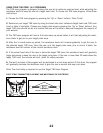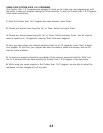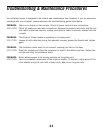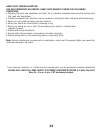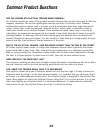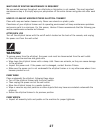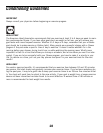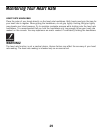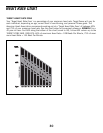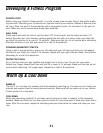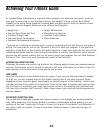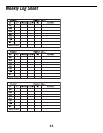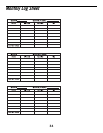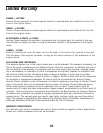
32
An important step in developing a long term fitness program is to determine your goals. Is your pri-
mary goal for exercising on your elliptical trainer to lose weight? Improve muscle? Burn Stress?
Prepare for the spring racing schedule? Knowing what your goals are will help you develop a more
successful exercise program. Below are some common exercise goals:
• Weight Loss • Weight Maintenance
• Improve Body Shape and Tone • Strengthen Leg Muscles
• Increased Energy Level • Improved Sleep Patterns
• Improved Sports Performance • Stress Reduction
• Improved Cardiovascular Endurance
If possible try to define your personal goals in precise, measurable terms, and then put your goals in
writing. The more specific you can be, the easier it will be to track your progress. If your goals are
long term, divide them up into monthly and weekly segments. Longer term goals can lose some of the
immediate motivation benefits. Short term goals are easier to achieve. Your elliptical trainer console
provides you with several readouts that can be used to record your progress. You can track Distance,
Calories or Time. Time is the most important and useful of test functions.
KEEPING AN EXERCISE DIARY
Photocopy the weekly and monthly log sheets on the following pages to make your personal exercise
log book. As time goes by you’ll be able to look back with pride at the work you’ve done. As your fit-
ness improves, you can look back and see how far you’ve come.
HOW HARD?
How hard you workout is also determined by your goals. If you use your elliptical trainer to prepare
for a 5K run, you will probably work out at a higher intensity than if your goal is general fitness.
Regardless of your long term goals, always begin an exercise program at low intensity. Aerobic exer-
cise does not have to be painful to be beneficial! There are two ways to measure your exercise inten-
sity. The first is by monitoring your heart rate, and the second is by evaluating your perceived exer-
tion level (this is simpler than it sounds!). Note: Always consult your physician before beginning an
exercise program.
PERCEIVED EXERTION LEVEL
The second and simpler way to gauge your exercise intensity is to evaluate your perceived exertion
level. While exercising if you are too winded to maintain a conversation without gasping, you are
working out too hard. A good rule of thumb is to work to the point of exhilaration, not exhaustion. If
you cannot catch your breath, it’s time to slow down. Always be aware of other warning signs of
overexertion.
Achieving Your Fitness Goals




